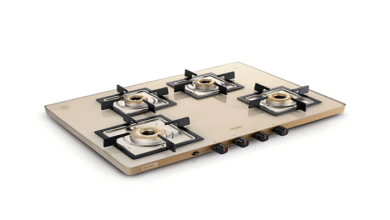Moderate Heatwave Warnings: Stay Safe in Rising Temperatures

As the world grapples with the effects of climate change, extreme weather events have become increasingly common. One such event is a heatwave, which can bring scorching temperatures that pose significant risks to public health. In this comprehensive guide, we’ll delve into the topic of “moderate heatwave warnings,” discussing what they mean, how to prepare for them, and most importantly, how to stay safe when they occur.
What is a Moderate Heatwave Warning?
A moderate heatwave warning is an official alert issued by meteorological authorities to inform the public about a period of excessively hot weather. Such warnings are usually based on a combination of high temperatures, humidity levels, and the duration of the heat event. These warnings are crucial because moderate heatwaves can have serious health consequences if not taken seriously.
The Science Behind Moderate Heatwaves
Before delving into how to prepare for and respond to moderate heatwave warnings, it’s essential to understand the science behind these weather events. A moderate heatwave typically occurs when a region experiences prolonged periods of higher-than-average temperatures. Factors such as high-pressure systems, clear skies, and the geographical location of an area can all contribute to the intensity of a heatwave.
Read more about G20 Summit 2023: What to Expect from India’s Presidency
Recognizing the Signs of a Moderate Heatwave
- Rising Temperatures: The most obvious sign of a moderate heatwave is a significant increase in daily temperatures, often reaching well above normal.
- High Humidity: Combined with high temperatures, high humidity levels can make the heat feel even more unbearable and dangerous.
- Excessive Sunshine: Prolonged periods of clear skies and abundant sunshine can contribute to the intensity of a heatwave.
- Heat Index: The heat index, or “feels like” temperature, takes into account both temperature and humidity levels. When the heat index is exceptionally high, it indicates dangerous conditions.
Preparation is Key
Now that you understand what a moderate heatwave warning is and how to recognize its signs, it’s time to discuss how to prepare for such an event. Being proactive and taking necessary precautions can significantly reduce the risks associated with hot weather.
1. Stay Informed
- Monitor local news and weather forecasts regularly. Meteorological authorities provide timely updates on heatwave warnings.
- Sign up for emergency alerts on your phone to receive real-time notifications about weather warnings.
2. Create a Heatwave Emergency Kit
Prepare a heatwave emergency kit that includes:
- Sufficient water: Ensure you have an ample supply of clean drinking water for you and your family.
- Non-perishable food items: Stock up on non-perishable foods that require no cooking, such as granola bars and canned goods.
- First aid supplies: Include basic first aid items like bandages, antiseptic wipes, and any necessary medications.
- Battery-operated fans and flashlights: In case of power outages, having battery-operated fans and flashlights can provide much-needed relief.
3. Plan for Transportation
If you need to travel during a heatwave, take the following precautions:
- Ensure your vehicle is in good working condition, especially the air conditioning system.
- Carry extra water and supplies in your car in case of unexpected delays or emergencies.
4. Stay Hydrated
During a moderate heatwave, it’s crucial to stay hydrated. Drink plenty of water throughout the day, even if you don’t feel thirsty. Avoid alcohol and caffeinated beverages, as they can contribute to dehydration.
5. Protect Vulnerable Populations
- Keep a close eye on children, the elderly, and pets during heatwaves. They are more susceptible to heat-related illnesses.
- Never leave children or pets in a parked car, even for a short period, as temperatures inside a vehicle can become dangerously hot.
Responding to a Moderate Heatwave Warning
When a moderate heatwave warning is issued, it’s essential to take immediate action to protect yourself and your loved ones. Here’s how to respond effectively:
1. Stay Indoors During Peak Heat
- Limit outdoor activities, especially during the hottest part of the day, typically between 10 a.m. and 4 p.m.
- If you must go outside, wear lightweight, loose-fitting clothing, a wide-brimmed hat, and sunglasses. Use sunscreen with a high SPF to protect your skin.
2. Keep Your Home Cool
- Use fans or air conditioning to maintain a comfortable indoor temperature.
- Close blinds or curtains to block out direct sunlight.
3. Stay Hydrated and Cool
- Drink water regularly, and avoid alcoholic and caffeinated beverages.
- Take cool showers or baths to lower your body temperature.
4. Check on Vulnerable Individuals
- Regularly check on elderly neighbors, family members, and friends who may be at risk.
- Ensure that pets have access to fresh water and a cool place to rest.
5. Be Aware of Heat-Related Illnesses
Recognize the symptoms of heat-related illnesses, such as heat exhaustion and heatstroke:
- Heat exhaustion symptoms include heavy sweating, weakness, dizziness, nausea, and cool, clammy skin.
- Heatstroke symptoms are more severe and may include a high body temperature, confusion, rapid heartbeat, and loss of consciousness. Heatstroke is a medical emergency; call 911 immediately if you suspect someone has it.
Conclusion
Moderate heatwave warnings are serious alerts that should not be taken lightly. Understanding the science behind heatwaves, recognizing their signs, and being prepared can make a significant difference in staying safe during these extreme weather events. By following the precautions and response strategies outlined in this guide, you can protect yourself, your family, and your community from the dangers of moderate heatwaves. Stay informed, stay cool, and stay safe.




